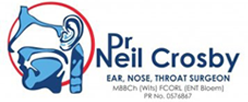Have you ever woken up with a sore throat that would not go away? Maybe your little one struggles with recurring fevers, swollen tonsils, or shortness of breath at night. Throat problems can cause sleepless nights and anxious days. They can also affect how you speak, swallow, and eat. Taking the proper steps toward treatment can help you reclaim comfort and peace of mind.
What conditions could be affecting you?
A range of conditions might trigger throat discomfort or disrupt daily life. These include:
- Tonsillitis: Inflammation of the tonsils, often causing pain and difficulty swallowing.
- Adenoiditis: Enlarged or inflamed adenoids that can affect breathing.
- Laryngitis: An inflamed voice box, frequently linked to hoarseness or voice loss.
- Gastroesophageal Reflux Disease (GERD) and Laryngopharyngeal Reflux (LPR): Acid reflux that irritates the throat and can contribute to chronic cough or hoarseness.
- Swallowing Disorders (Dysphagia): Difficulty eating or drinking due to issues in the throat or oesophagus.
- Sleep Apnea: Interrupted breathing during sleep, which may stem from airway blockages.
- Chronic Cough: Persistent coughing that can be linked to throat irritation or acid reflux.
- Infections (Strep throat, Pharyngitis): Bacterial or viral infections causing pain, fever, or discomfort.
When are tonsils and adenoids a problem?
Tonsils function like security guards, filtering out harmful bacteria or viruses. Adenoids form part of the same protective system and sit near the back of the nasal passage. Challenges can occur when you start to struggle with repeated infections rather than effectively battling them. These infections can present as:
- Frequent sore throats or fever.
- Enlarged tonsils blocking normal swallowing or breathing.
- Persistent nasal obstruction or snoring due to swollen adenoids.
- Repeated visits to the doctor for antibiotics that provide temporary relief.
At this point, Dr Crosby might recommend removing the tonsils (tonsillectomy) or adenoids (adenoidectomy). By removing the chronically inflamed tissue, you can reduce the chances of new infections and enjoy improved airflow.
How does a tonsillectomy help?
A tonsillectomy is a procedure that removes troublesome tonsils by carefully separating them from surrounding tissues. In an ideal scenario, the surgeon follows a natural tissue plane, which means minimal cutting and less bleeding. However, if the tonsils are heavily infected or scarred, the surgeon may need to take a bit more care and time to remove them safely.
The first few days after surgery can be uncomfortable. Pain usually peaks around days three to five, as the healing process kicks in, and then tends to ease between six and ten. Alternating between different types of pain relief every few hours can help your child stay ahead of the pain.
When it comes to eating and drinking, staying well hydrated is one of the most essential things.. You can offer your child water, ice chips, and mild-tasting juices to soothe the throat. Soft foods like jelly or ice cream can offer relief, but crunchy items such as biltong may help gently clear the healing area. A spoonful of honey can also support healing — just make sure it is pure and natural (Dr Crosby swears by the honey from his local farmer’s market). Try to avoid anything extremely hot, spicy, or acidic in the first week.
Rest is also vital. The more comfortable your child feels, the more likely they are to eat, drink, and bounce back faster. Just be sure to watch for any signs of dehydration or intense pain that does not improve.
Why remove the adenoids?
Adenoids sit at the back of the nose, making them invisible during a normal exam without special instruments. Children with enlarged adenoids might struggle to breathe through the nose, snore loudly, or pause breathing while asleep. Removing large adenoids frees the airway, which can reduce snoring and help your child sleep better. Moreover, adenoids can harbour bacteria. Taking them out can lessen recurring throat or ear problems.
Which other throat procedures might be needed?
- Laryngoscopy: A simple scope evaluation of the voice box to identify causes of hoarseness or suspicious growths.
- Laser Surgery for Voice Disorders: Targeted removal of lesions or nodules on the vocal cords using a laser.
- Tracheotomy: Making a small opening in the neck can help ensure breathing in case of a significant airway blockage.
What should I expect after surgery?
Plan for a few days of rest. Pain may feel more intense during the healing phase than immediately after the procedure. Swelling or minor bleeding can occur in the first 24 hours. If pain seems poorly controlled or if swallowing becomes extremely difficult, contact the practice promptly.
Focus on keeping the throat moist and well-hydrated. Use the prescribed pain relievers on a schedule, and offer gentle foods if a child is recovering. Follow-up visits allow careful assessment of healing and guide further steps if needed.
A recurring sore throat or enlarged tonsils can disrupt your life or your child’s well-being. Infections, breathing difficulties, and sleepless nights may feel relentless. However, relief is possible. With proper evaluation, medication, and surgery when necessary, you or your loved one can regain a healthy, comfortable throat.
If you have ongoing throat issues, consider booking an appointment with Dr Crosby to explore whether a procedure could offer the respite you have been searching for.

